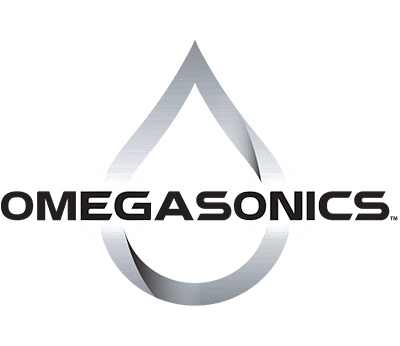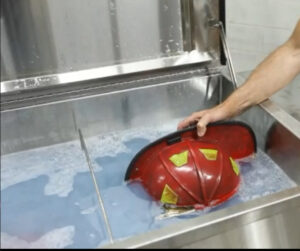Introduction
In today’s world, where cleanliness and hygiene are paramount, ultrasonic cleaners have become a popular choice for thorough and efficient cleaning. These innovative devices utilize the power of high-frequency sound waves to remove dirt, grime, and contaminants from a wide range of objects and materials. Whether you’re a homeowner, a DIY enthusiast, or working in industries like healthcare, automotive, aerospace, or electronics, understanding how ultrasonic cleaners work can be beneficial. In this comprehensive guide, we will delve into the science behind ultrasonic cleaning, explore its applications, and provide insights to help you make the most of this technology.
The Science Behind Ultrasonic Cleaning
Ultrasonic cleaning is based on a fascinating phenomenon called cavitation. When an object is submerged in a liquid solution, usually water or a suitable solvent, and subjected to high-frequency sound waves, cavitation occurs. Cavitation refers to the formation and implosion of microscopic bubbles in the liquid. These bubbles implode with tremendous force upon reaching a certain size, creating a scrubbing action that dislodges dirt and contaminants from the surface of the object. The process of cavitation is the key mechanism behind the cleaning power of ultrasonic cleaners.
Components of an Ultrasonic Cleaner
To understand how an ultrasonic cleaner works, let’s take a closer look at its components:
- Tank: The tank is the container that holds the cleaning solution and the object to be cleaned. It is typically made of stainless steel or another material that can withstand the cleaning process.
- Generator: The generator is the power source that produces the high-frequency electrical signals required to drive the ultrasonic transducers.
- Transducers: Transducers are the heart of an ultrasonic cleaner. They convert the electrical energy from the generator into mechanical vibrations, which are then transmitted into the cleaning solution. These vibrations create the high-frequency sound waves necessary for cavitation to occur.
The Process of Cavitation
Cavitation, as mentioned earlier, is the formation and collapse of microscopic bubbles in the cleaning solution. The process can be broken down into several stages:
- Bubble Formation: When the transducers vibrate, they create alternating high and low-pressure waves in the cleaning solution. During the low-pressure phase, tiny gas pockets or nuclei present in the liquid expand, forming bubbles.
- Bubble Growth: The bubbles continue to grow as the sound waves pass through the liquid. The size of the bubbles is directly related to the frequency of the sound waves.
- Bubble Implosion: Once the bubbles reach a critical size, the pressure surrounding them rapidly increases, causing them to collapse or implode. The implosion of the bubbles generates intense localized energy in the form of shockwaves and microjets, which impact the surface of the object being cleaned.
- Scrubbing Action: The implosion of the bubbles creates a scrubbing action that dislodges dirt, grime, and contaminants from the surface of the object. The energy released during the implosion also helps to break up stubborn deposits and removes them from hard-to-reach areas, such as crevices, cracks, and blind holes.
- Debris Removal: Once the contaminants are dislodged, they become suspended in the cleaning solution. The continuous agitation of the solution by the ultrasonic waves ensures that the debris is carried away from the object and does not redeposit back onto the surface.
Applications of Ultrasonic Cleaning
Ultrasonic cleaners find applications in various industries and for a wide range of objects and materials. Let’s explore some of the key areas where ultrasonic cleaning is utilized:
1. Healthcare Industry
In the healthcare industry, maintaining cleanliness and sterility is of utmost importance. Ultrasonic cleaners are extensively used for cleaning surgical instruments, medical devices, and dental equipment. The thorough cleaning power of ultrasonics ensures that contaminants and biofilms are effectively removed, meeting the stringent standards required for healthcare settings.
2. Automotive Industry
The automotive industry benefits greatly from ultrasonic cleaning technology. Complex engine parts, such as carburetors and fuel injectors, can be thoroughly cleaned using ultrasonic cleaners. The ability to reach intricate areas and remove stubborn deposits improves the performance and efficiency of these parts.
3. Aerospace and Defense Industry
In the aerospace and defense industry, ultrasonic cleaning plays a crucial role in both manufacturing and maintenance procedures. During the manufacturing process, ultrasonic cleaners are used to remove contaminants from critical parts, ensuring their quality and reliability. For maintenance and operation, ultrasonic cleaners help in the removal of dirt, grease, and other contaminants from components and equipment.
4. Electronics Industry
The electronics industry relies on ultrasonic cleaning for the manufacturing and reconditioning of printed circuit boards (PCBs) and delicate electronic components. Ultrasonic cleaners can effectively remove flux agents, dust, fingerprints, and other contaminants from these sensitive parts, ensuring their optimal performance.
5. Household and DIY Applications
Ultrasonic cleaners are not limited to industrial use. They have gained popularity in households and among DIY enthusiasts for various cleaning tasks. Jewelry, watches, eyeglasses, dental appliances, coins, and even small household items can be effectively cleaned using ultrasonic cleaners.
Choosing the Right Ultrasonic Cleaner Solution
The selection of the cleaning solution is crucial for achieving optimal cleaning results with an ultrasonic cleaner. Various ultrasonic cleaner solutions, also known as cleaning chemistries or soaps, are available, each designed for specific cleaning tasks. Factors to consider when choosing the right ultrasonic cleaner solution include the type of contaminants, the material being cleaned, and any specific requirements or regulations.
Conclusion
Ultrasonic cleaners are powerful tools for achieving thorough and efficient cleaning. By harnessing the science of cavitation, these devices can remove dirt, grime, and contaminants from a wide range of objects and materials. Whether used in healthcare, automotive, aerospace, electronics, or household applications, ultrasonic cleaners offer a versatile and effective cleaning solution. Understanding the science behind ultrasonic cleaning and its various applications can help you make informed decisions when utilizing this technology for your cleaning needs. So, embrace the power of ultrasonics and enjoy the benefits of a cleaner and healthier environment.
For more information on how an ultrasonic cleaner works, visit our YouTube video. https://www.youtube.com/watch?v=3OCr88B-mxA&t=2s

